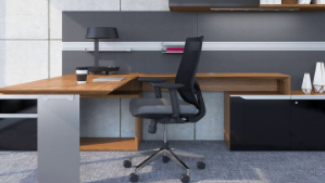There are a few elements to weigh when choosing to utilize cleans and waxes on furnishings, and what’s more, other wooden items. One basic component is that the fixings in business shine furthermore, it is seldom uncovered to clean items. In addition, these fixings can be, and much of the time changed abruptly or notice. These fixings might be innocuous or on the other hand unsafe to the furnishings (and to you) and you have no chance of knowing ahead of time. Cleaning items are accessible in three structures: spray (shower); fluid; and semisolid. Here is a glance at their advantages and downsides. Office furniture clearance London has a very good polishing effect.
Sprayers (Spray Polishes)

Sprayers are advantageous. In any case, they have been among the most awful wrongdoers in presenting silicone oils and different pollutants onto furniture. What’s more, they may contain solvents that assault stains and polish. While a portion of the “cleaning” vapor sprayers gives off an impression of being harmless when applied to a material and not the household item, the outcome is like utilizing a sodden, clean residue fabric.
Fluids
Like sprayers, fluid shines are not difficult to utilize. There are two essential types of business fluid items for “furniture care”: emulsion cleaner or cleans and “oil type” shines. Emulsion shines are waxes, oils, cleansers, natural solvents, and different materials suspended in water for simplicity of utilization. These items can be incredibly strong cleaners that leave a beneficial sheen on a superficial level. In any case, the special visualization for the most part decreases as the fluid dries. In addition, similar to sprayers, emulsion shines can present pollutants onto the furnishings, but since they are fluids they place substantially more volume than splashes on the furniture surface. Oil shines are significantly more irksome. Similar to emulsion shine, oil shines can be a complex mix of fixings including oils, waxes, scents, colorants, “cleaners,” and natural solvents. They can deliver very satisfying surfaces and are utilized regularly as last wraps up without help from anyone else. Notwithstanding, oils utilized as shines or cleaners can be very harmful. Nondrying oils (paraffin, mineral, and “lemon oil,” which is generally mineral oil with colorants furthermore, scents added) will quite often be more harmless than drying oils, yet all things considered, some oil remains as fluid on (or in) the item. Dust and other airborne pollutants promptly stick to wet surfaces, particularly oils. Yet, nondrying oils don’t go through synthetic responses or straightforwardly harm the furnishings. Drying oils, then again, like linseed, tung, or pecan oil, is an alternate matter by and large. These materials set, or “dry” through a synthetic response with the air called oxidation. Over the long run, this response makes them progressively challenging to eliminate. Their changelessness is fine if the oil is utilized as the completion, however bad assuming it is utilized as support clean. Without help from anyone else, having a clean that is hard to eliminate would be an aggravating yet not an unrealistic issue. Tragically, as drying oils age they will generally yellow and within the sight of acids, they are chromogenic (become Colored), turning a dull, sloppy brown or dark. Customarily, cleaning and cleaning creations contained linseed oil, turpentine, beeswax, and vinegar (acidic corrosive) were broadly involved even in the exhibition hall field until late. They ended up being a fiasco in the works.

